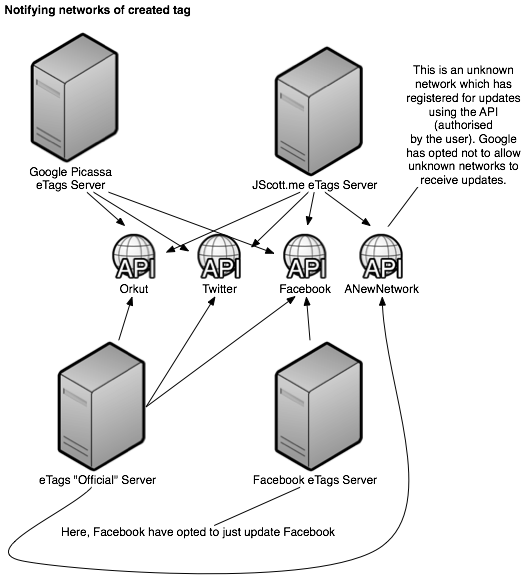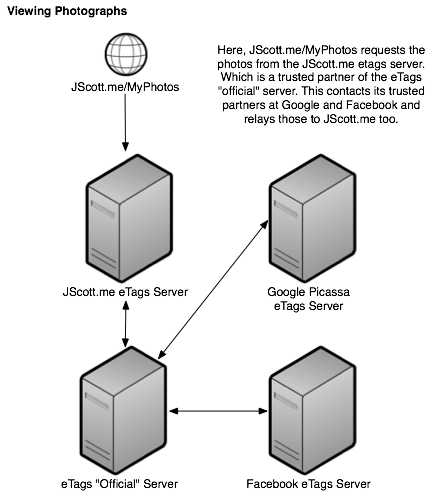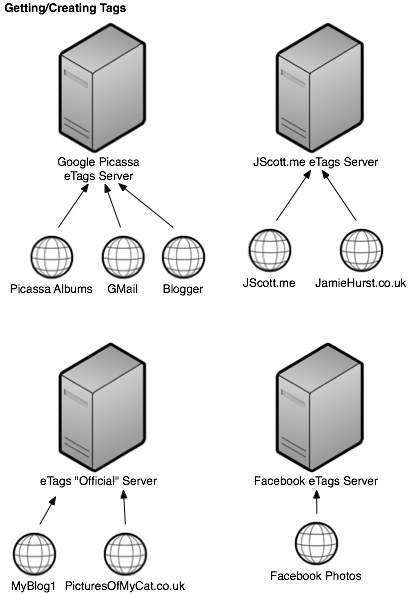(Note that this is proposed before we have completed the research on linked data – so this is subject to change)
This first thing to notice is that there are many eTags servers in existence – the “official” one existing simply for people who don’t wish to host their own or can’t find another public one. Each eTags server hosts potentially many sites – in the case of Facebook just hosting their own photos, but Google hosting the Picassa photos, photos in GMail, and also photos on Blogger blogs.
(Also note that I don’t realistically expect Facebook to ever be on board with opening up of tagging data. Google is perhaps more realistic as this would cause problems for Facebook’s growing monopoly on image data).
When a user visits a website using eTags they connect only to the server specified by that site. This may result in one image (identified by the unique URI) being indexed on two websites with different tagged data. This will need to be synchronised, the process of which I will detail in a future post.

The basic mechanism for notification of tagged images (“Jonathan was tagged in a photo on Jamie’s Blog”) is that the service wanting to show the notifications would register with an eTags server, then when that server is informed of a new tag it would call back using that services api. As it is unlikely the big social networks would be on board early on there would be special handlers for these networks to allow them to work without changes to their code. This is designed in this way so as to allow for future networks to emerge and avoid cementing the monopoly a few social networks already have.

When viewing photographs the site viewing connects to a single eTags server, which then contacts its trusted partners to see if they have any tags of the specified user, they contact their partners… etc. This ensures that there is no central server which holds all of the data and if one goes down it is possible to route around it and still get the majority of the information.
Privacy
With so many services involved (multiple eTags servers, multiple social networks, and multiple people) privacy is very important and establishing trust is vital. There needs to exist a secure method of users selecting which other users, and which services can view their photos, and there also needs to be an assurance that rogue servers will not intercept the data and avoid the security settings.
This needs to be considered in depth and ideas will be published in a future post.

